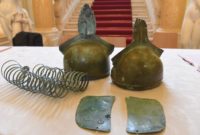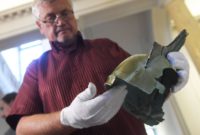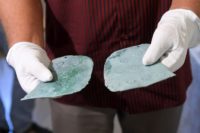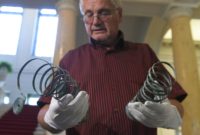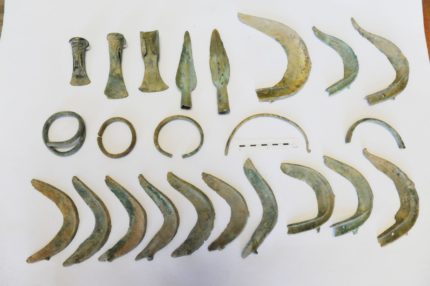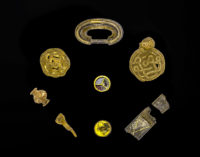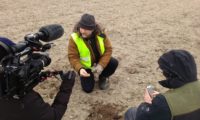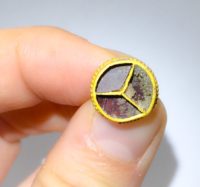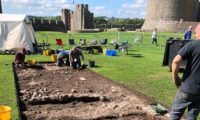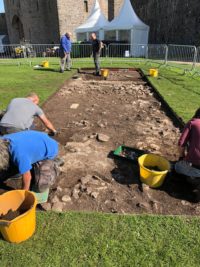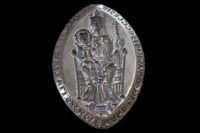 A rare silver seal matrix from the 12th century has been found in the stores of Lincoln Cathedral. Collections and engagement officer Fern Dawson discovered the artifact in an uncatalogued box during an audit of the cathedral’s holdings. The box was full of seals, but they were all replicas. At first the 12th century piece was believed to be one of them, a Victorian-era reproduction, but experts examined it and identified it as the original matrix used by the medieval Dean and Chapter of Lincoln Cathedral to create the wax seals affixed to official documents.
A rare silver seal matrix from the 12th century has been found in the stores of Lincoln Cathedral. Collections and engagement officer Fern Dawson discovered the artifact in an uncatalogued box during an audit of the cathedral’s holdings. The box was full of seals, but they were all replicas. At first the 12th century piece was believed to be one of them, a Victorian-era reproduction, but experts examined it and identified it as the original matrix used by the medieval Dean and Chapter of Lincoln Cathedral to create the wax seals affixed to official documents.
The obverse of the seal depicts the Virgin Mary, crowned and enthroned, holding the Christ child in her lap. The reverse features the enthroned adult Christ. Mary is the patron saint of Lincoln Cathedral, aka Cathedral Church of the Blessed Virgin Mary of Lincoln. The seal matrix was made in the early years of the cathedral’s long life. The first wood church was completed in 1092. It was rebuilt in the second quarter of the 12th century and then again after a massive earthquake in 1185.
Lloyd de Beer, Ferguson Curator of Medieval Europe at the British Museum, said: “Institutional seal matrices like this are extremely rare, especially in silver and from such an early date. The Lincoln seal is a joy to behold. It is a masterpiece of micro sculpture made by a truly skilled goldsmith. What’s more, the reverse contains beautiful swirls of niello surrounding an enthroned Christ.”
Its prior existence was known of, and “the Great Seal of the Chapter of Lincoln Cathedral” had a world-wide reputation as a rare piece of 12th century craftsmanship, but until recently no one in living memory had seen or handled the real object.
“Since 1893, important Cathedral documents have been sealed using an electrotyped copy while the true matrix has lain hidden and unrecognised within the Cathedral store,” explained expert in medieval ecclesiastical treasures, Dr Lesley Milner FSA.
“It was a hugely exciting moment for us all when this forgotten art work was rediscovered and put into the hands of Professor Sandy Heslop, an authority on 12th century metalwork. For a moment there was silence and then he said ‘Wow!’, realising that Lincoln had re-acquired a supreme piece of Norman art.”
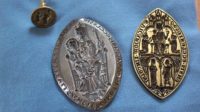 Two other original medieval seal matrices were found next to the 12th century one in the box full of replicas. There was also a 13th century one of the Vicars Choral and a 14th century Sacrist’s Seal, a personal seal matrix for a cleric named John. The three seals went on display in the Lincoln Cathedral treasury on September 15th. They will remain on public view in the treasury until they are moved to the new visitor center when it opens in 2020.
Two other original medieval seal matrices were found next to the 12th century one in the box full of replicas. There was also a 13th century one of the Vicars Choral and a 14th century Sacrist’s Seal, a personal seal matrix for a cleric named John. The three seals went on display in the Lincoln Cathedral treasury on September 15th. They will remain on public view in the treasury until they are moved to the new visitor center when it opens in 2020.
